
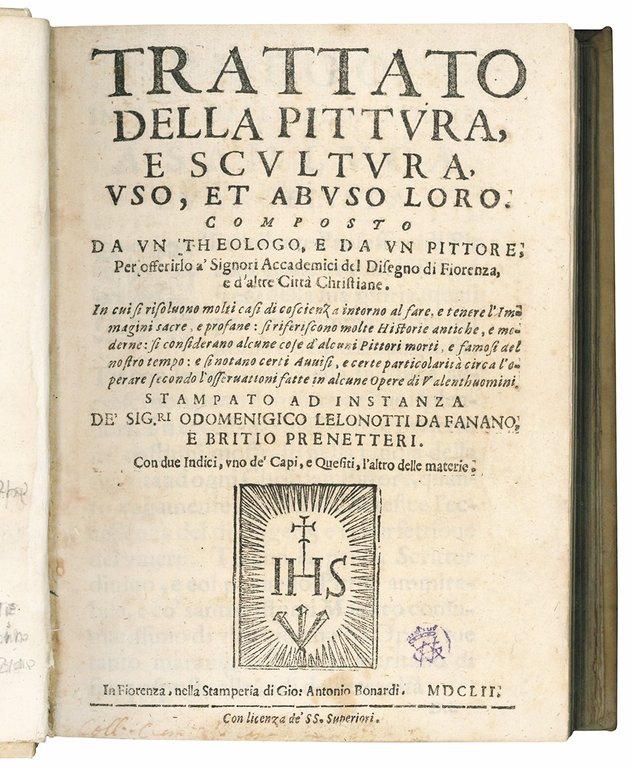
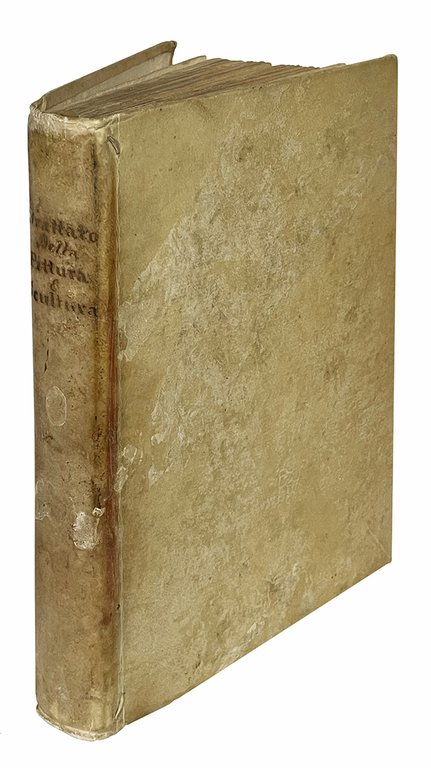
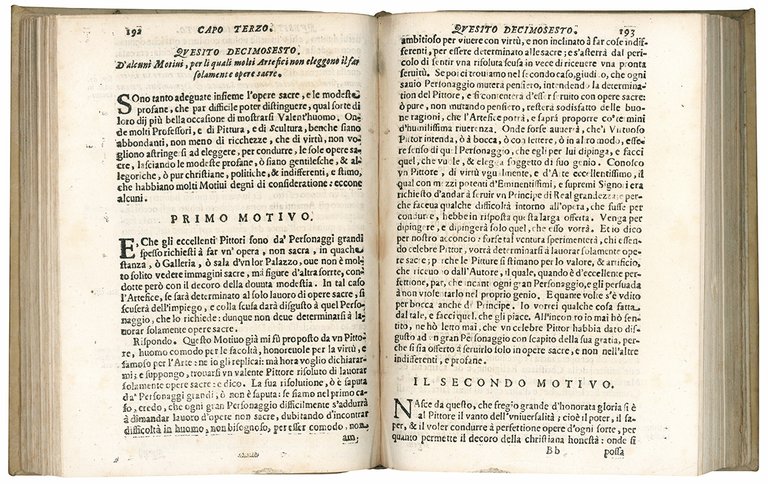
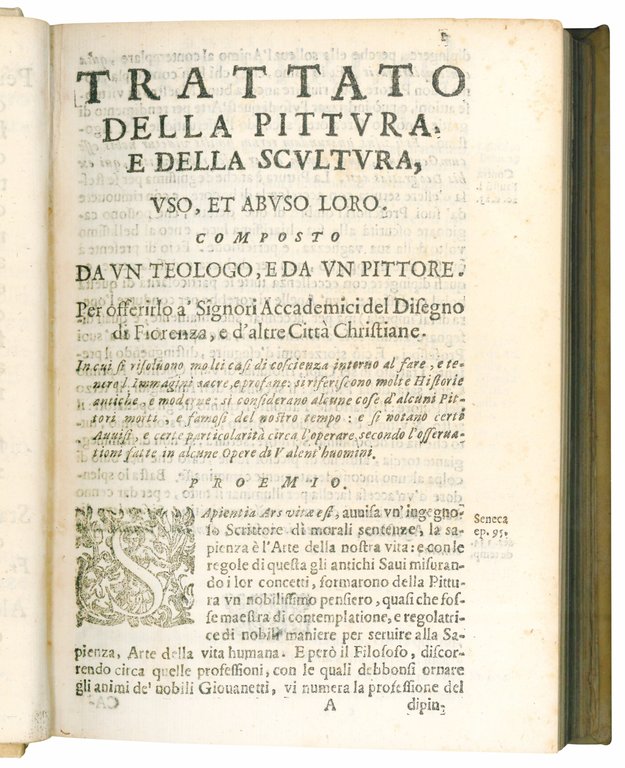
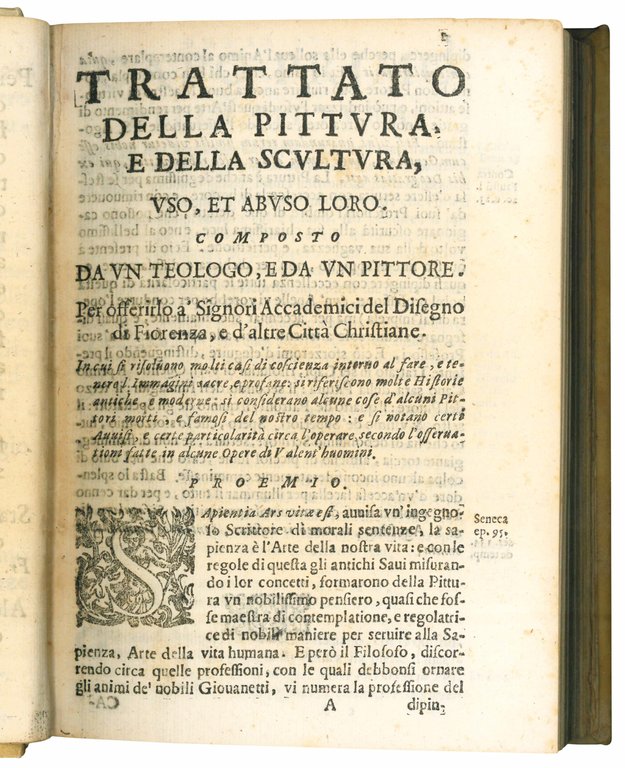
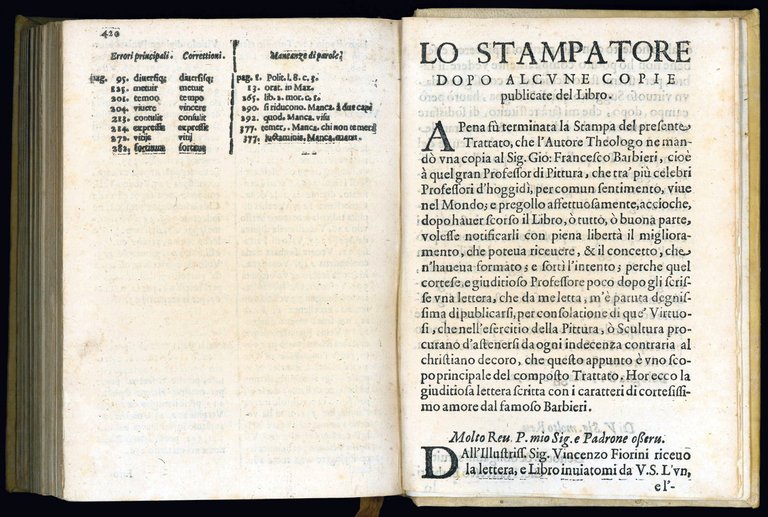
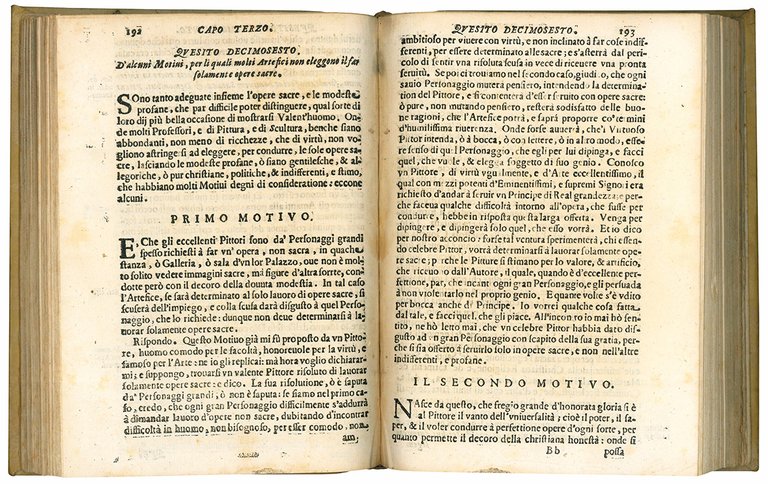
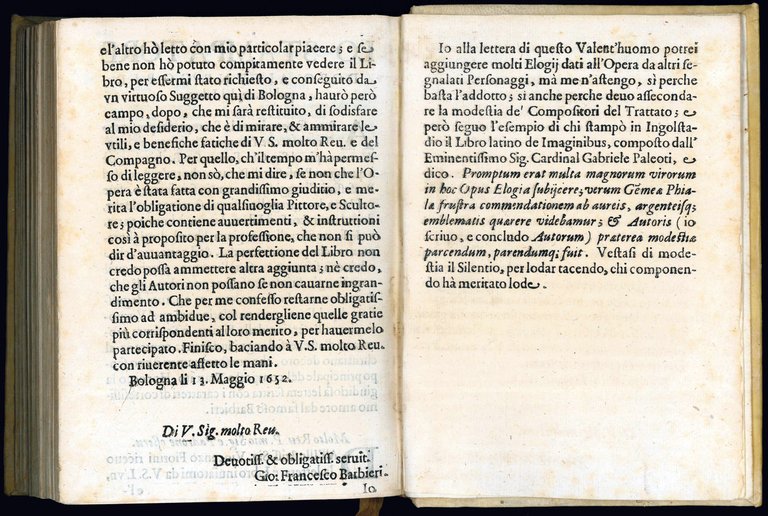
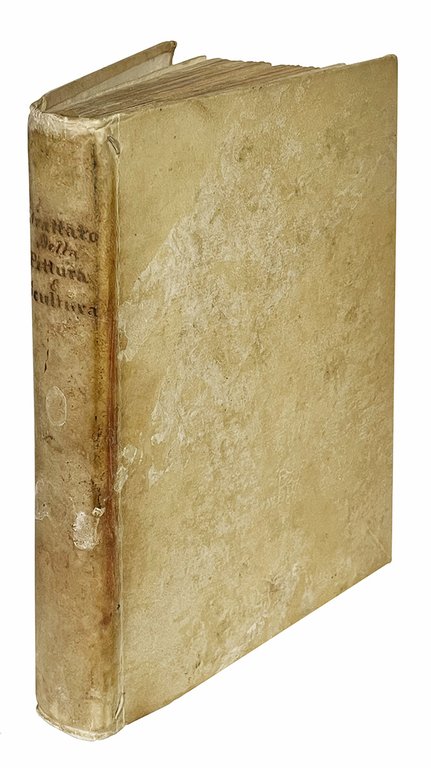
Libri antichi e moderni
OTTONELLI, Giovanni Domenico (1584-1670)-PIETRO DA CORTONA (Pi
Trattato della pittura, e scultura, uso, et abuso loro. Composto da un theologo, e da un pittore, per offerirlo a' signori accademici del disegno di Fiorenza, e d'altre città christiane. In cui si risolvono molti casi di coscienza intorno al fare, e tenere l'immagini sacre, e profane [...] Stampato ad instanza de' Sig.ri Odomenigico Lelonotti da Fanano, e Britio Prenetteri. Con due indici, uno de' capi, e quesiti, l'altro delle materie
Giovanni Antonio Bonardi, 1652
6800,00 €
Govi Libreria Antiquaria
(Modena, Italia)
Le corrette spese di spedizione vengono calcolate una volta inserito l’indirizzo di spedizione durante la creazione dell’ordine. A discrezione del Venditore sono disponibili una o più modalità di consegna: Standard, Express, Economy, Ritiro in negozio.
Condizioni di spedizione della Libreria:
Per prodotti con prezzo superiore a 300€ è possibile richiedere un piano rateale a Maremagnum. È possibile effettuare il pagamento con Carta del Docente, 18App, Pubblica Amministrazione.
I tempi di evasione sono stimati in base ai tempi di spedizione della libreria e di consegna da parte del vettore. In caso di fermo doganale, si potrebbero verificare dei ritardi nella consegna. Gli eventuali oneri doganali sono a carico del destinatario.
Clicca per maggiori informazioniMetodi di Pagamento
- PayPal
- Carta di Credito
- Bonifico Bancario
-
-
Scopri come utilizzare
il tuo bonus Carta del Docente -
Scopri come utilizzare
il tuo bonus 18App
Dettagli
Descrizione
4to (200x144 mm). [16], 420, [4] pp. Collation: †-††4 A-Ee4 Fff6 [χ]2. Jesuits' emblem on title page. Woodcut headpieces and initials. Later stiff vellum with inked title on spine. Faded manuscript note and Giuseppe Arconati Visconti purple stamp at the bottom of the title page. Small tear anciently repaired on title page not affecting the text, some light staining and foxing.
FIRST EDITION, in the issue with the rare added four pages containing a note of the typographer on the reception of the book (Lo stampatore dopo alcune copie pubblicate del Libro) and a letter in praise of the work, dated May 13, 1652, from the painter Giovanni Francesco Barbieri, called Guercino, which was printed separately and inserted only in a few copies, of this milestone treatise on Baroque painting and sculpture, written together by a Jesuit theologian and a painter. The authors appear in the title with the anagrams Odomenegico Lelonotti and Britio Prenetteri.
They provide both a description and a justification of Baroque aesthetics. Emphasizing the importance accorded to image over word and the salvific value of art, Ottonelli points out the theological path towards salvation, while Pietro da Cortona brings his technical skills into play and provides artistic examples to illustrate this path.
The very professional role of the two authors perfectly synthesizes the spirit of Baroque, which, in accordance with Counter-Reformation dictates, combines a high religious and moral purpose with the expressiveness and sensuality derived from a genuine cult of the image.
This apparently extravagant collaboration between a theologian and a painter should actually be framed in the broader context of the artistic patronage of the time and the role played in it by the Jesuits. The latter were indeed at the center of the cultural life of the seventeenth century, but due to a chronic lack of money they were constantly in search of rich patrons in order to have their churches built and decorated. Just as the Jesuit Gian Paolo Oliva was one of Gian Lorenzo Bernini's closest and most influential friends, so Ottonelli played an important role in Pietro da Cortona's artistic career, for it was he who got him the commission to paint Palazzo Barberini.
Giovanni Domenico Ottonelli, a native of Fanano in the Apennines of Modena, entered the novitiate in 1603. He taught rhetoric, was rector in Recanati and Fermo, and from 1640 to his death was director of the Marian Congregation of the artists in Florence. Among his many works is an important treatise on theater, Della cristiana moderatione del theatro (Florence, 1616-49). He died in Florence in 1670.
Pietro Berrettini, known as Pietro da Cortona after the name of his hometown, was one of the leading Italian painters and architects of the Baroque period. Active especially during the pontificate of Urban VIII, he designed Castel Gandolfo and was involved in the work of the churches of Santi Luca e Martina, Santa Maria della Pace, and Santa Maria in Via Lata. Between 1633 and 1639 he was responsible for the frescoes that decorates Palazzo Barberini. He was also the author of valuable anatomical plates, published only posthumously in 1741. He died in Rome in May 1669.
Melzi, II, pp. 264-265; Italian Union Catalogue, IT\ICCU\RMRE\002076; Cicognara, no. 222, De Backer-Sommervogel, VI, col. 12; Schlosser Magnino, 1967, pp. 616-618; G.D. Ottonelli, Trattato della pittura e scultura, uso et abuso loro, 1652, V. Casale, ed., Treviso, 1973.

